One day before my fellowship admission ceremony at the Royal College of Physicians and Surgeons of Glasgow, I was sitting in my room and surfing the net. I found that a museum in Glasgow, the Burrell Collection, houses some artifacts from Mesopotamia.
That’s great! I hired a taxi and went there. I arrived at 10:30 AM. It lies within Pollok Country Park, about 5 kilometers south of the Glasgow city center. In the year 1944 CE, Sir William Burrell, a Scottish philanthropist, art collector, and shipping merchant donated this magnificent collection of a multitude of artifacts to the city of Glasgow. The building is L-shaped and was opened in 1983 CE.
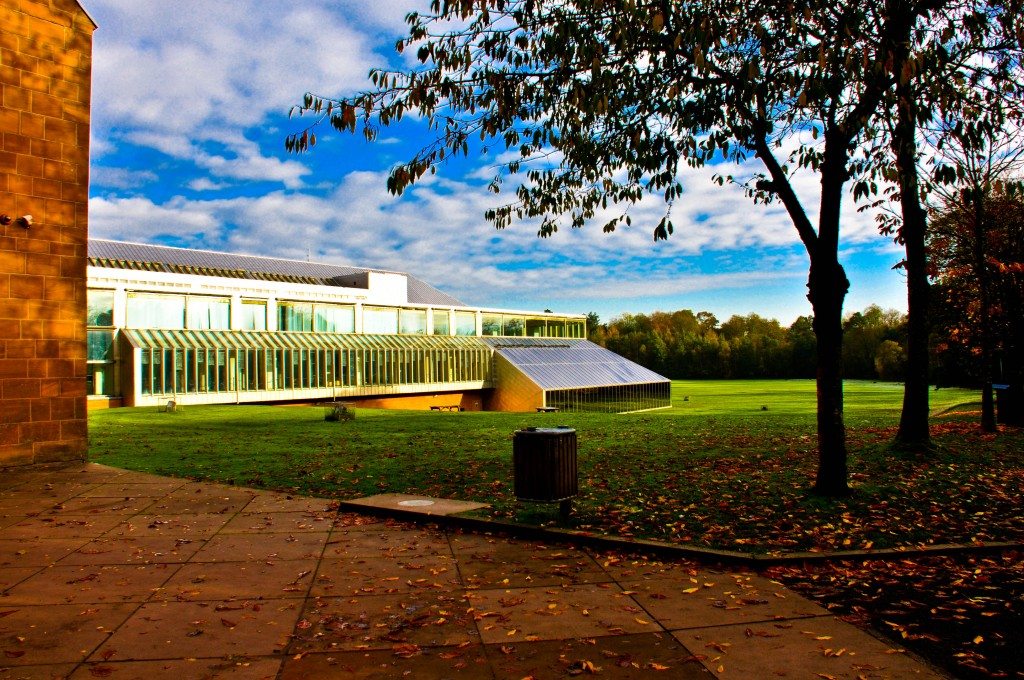
The Burrell Collection within the Pollock Country Park, Glasgow, UK. Photo © Osama S. M. Amin.
I was the very first visitor that day! The entry is free. Once you enter, you will see the information desk and some gift shops. The employees were very friendly; I told them that I came from Mesopotamia (modern-day Iraq), and I want to see the Mesopotamian artifacts.
Next to the Burrell shop is a small courtyard. It houses the Warwick vase and some bronze statues.
I passed through a façade of a building and found myself within the Ancient Egypt hall and then the section on Ancient Greece and Rome. The Mesopotamian artifacts were few and were displayed within two glass cases near the Hutton Castel Drawing Room. Thereafter, the Chinese, Medieval Europe, and Islamic collections appear. The Burrell Collection houses more than 700 stained glass panels, a collection that is considered one of the greatest assemblies of medieval stained glass in the whole world. There was a very neat café; I sat and enjoyed my hot drink.
Without the generosity of the late Sir Burrell, this marvelous collection of world-wide art would have not been accessible. I spent a wonderful and unforgettable time! Viva Glasgow!
The Warwick Vase
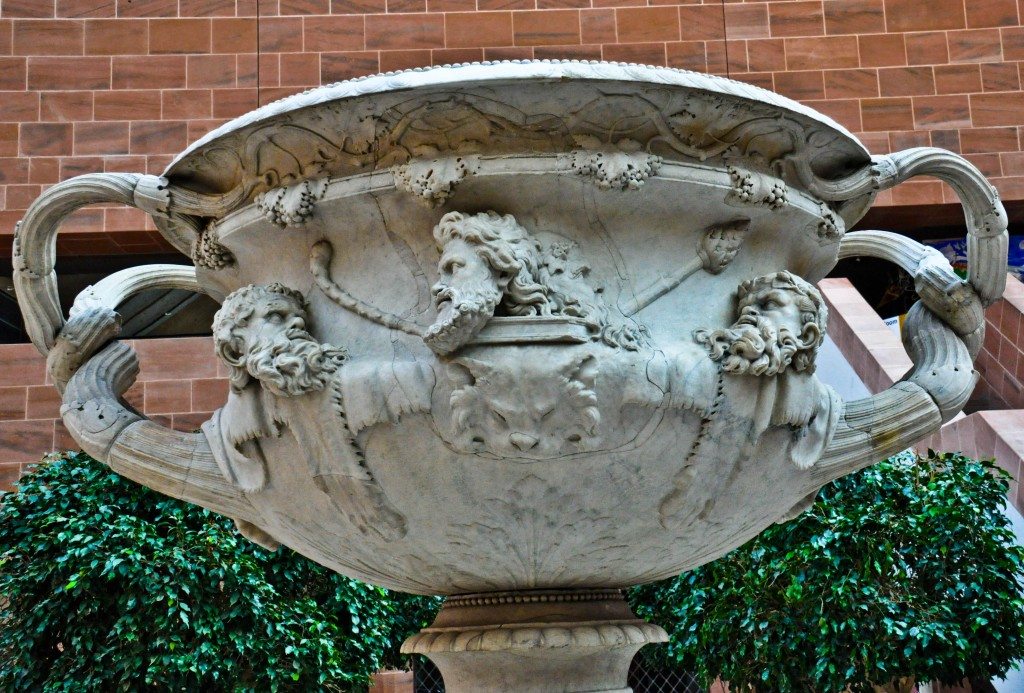
The Warwick Vase. This marble vase was acquired by the Trustees of the Burrell Collection with the assistance of the National Art-Collections Fund, the Scottish Heritage Fund, and anonymous donations. Roman, 2nd century CE, with 18 century reconstruction. It was found at Hadrian’s Villa at Tivoli. The restoration work was probably done by Peranesi and the sculpture Bartolomeo Cavaceppi. Photo © Osama S. M. Amin.
Egyptian Goddess Sekhmet

Granite head of the goddess Sekhmet. Egyptian, from Karnak, Temple of Mut. 18th Dynasty, reign of Amenophis III, 1402-1363 BCE. Photo © Osama S. M. Amin.
Ramesses II
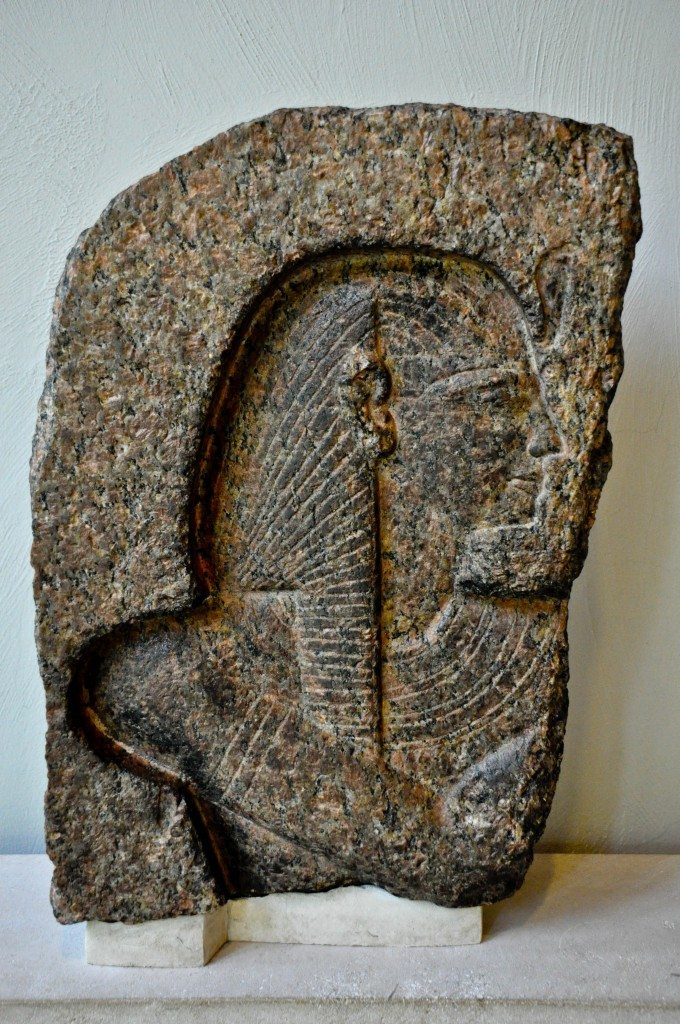
Ramesses II. Egyptian, 19th Dynasty, reign of Ramesses II, 1290-1224 BCE. Granite. Photo © Osama S. M. Amin.
Assyrian Attendant
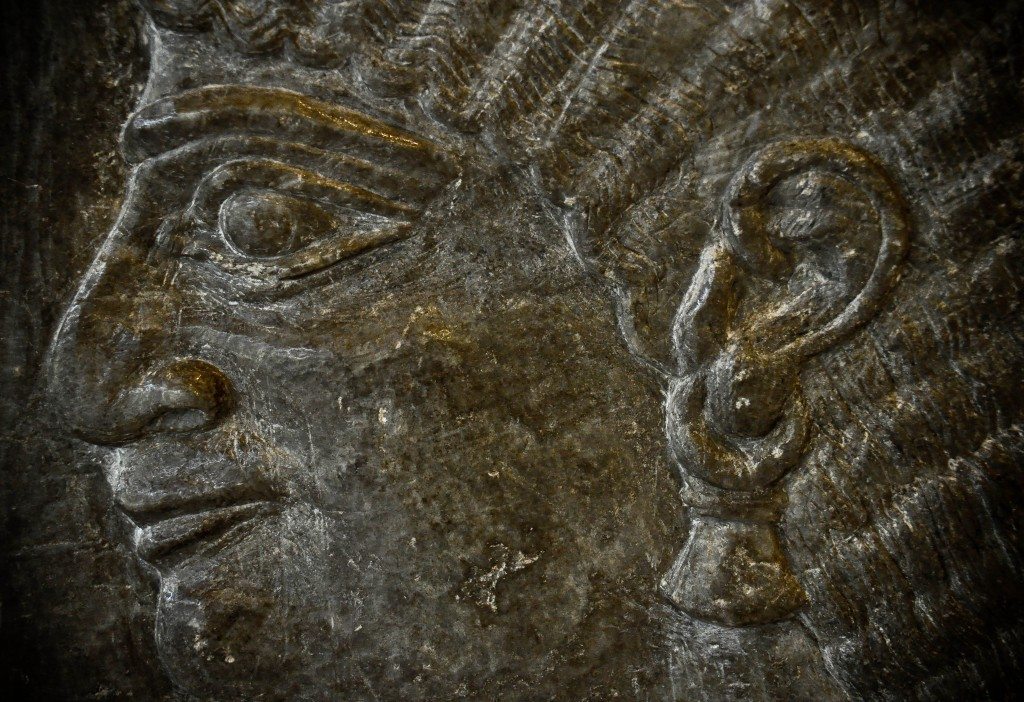
Alabaster bas-relief of an Assyrian attendant. From the north-west palace at Nimrud (ancient Kalhu; Biblical Calah). Mesopotamia, modern-day Iraq. Neo-Assyrian period, reign of Ashurnasirpal II, 883-859 BCE. Photo © Osama S. M. Amin.
Assyrian Archer
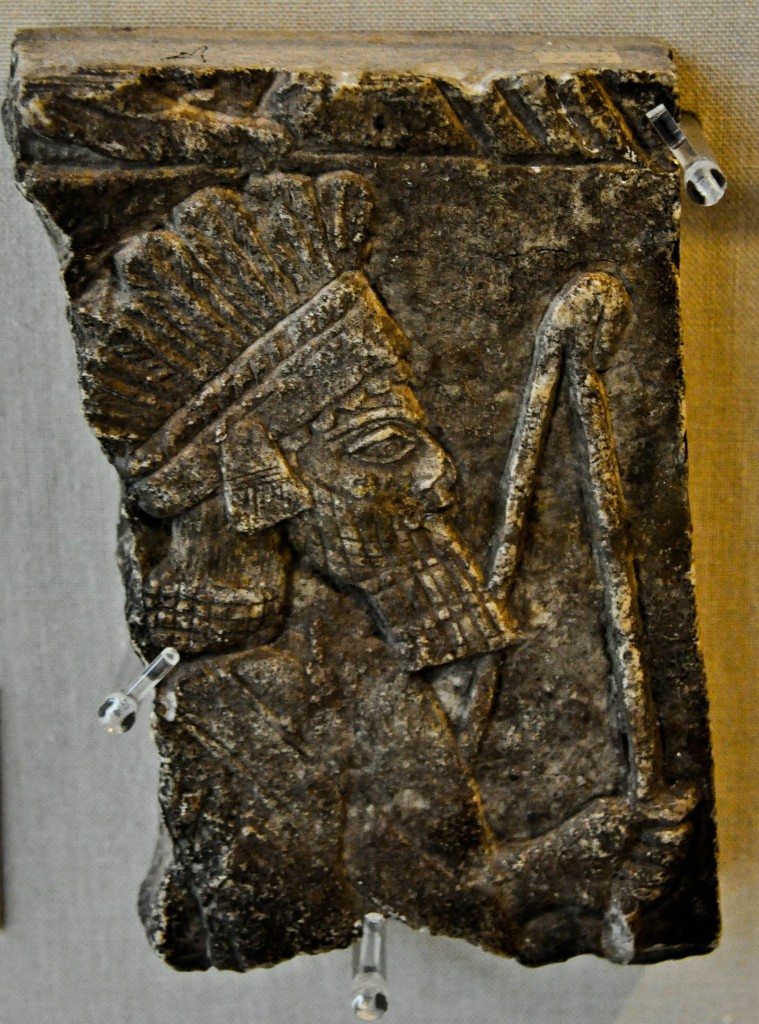
The upper part of the body of an archer (who might well represent an Assyrian soldier?). He wears a feather headdress. Alabaster bas-relief from Kuyunjik (modern-day Ninawa Governorate, northern Mesopotamia, Iraq). Reign of Ashurbanipal, 668-627 BCE. The Burrell Collection, Glasgow, Scotland, UK. Photo © Osama S. M. Amin.
Luohan Statue
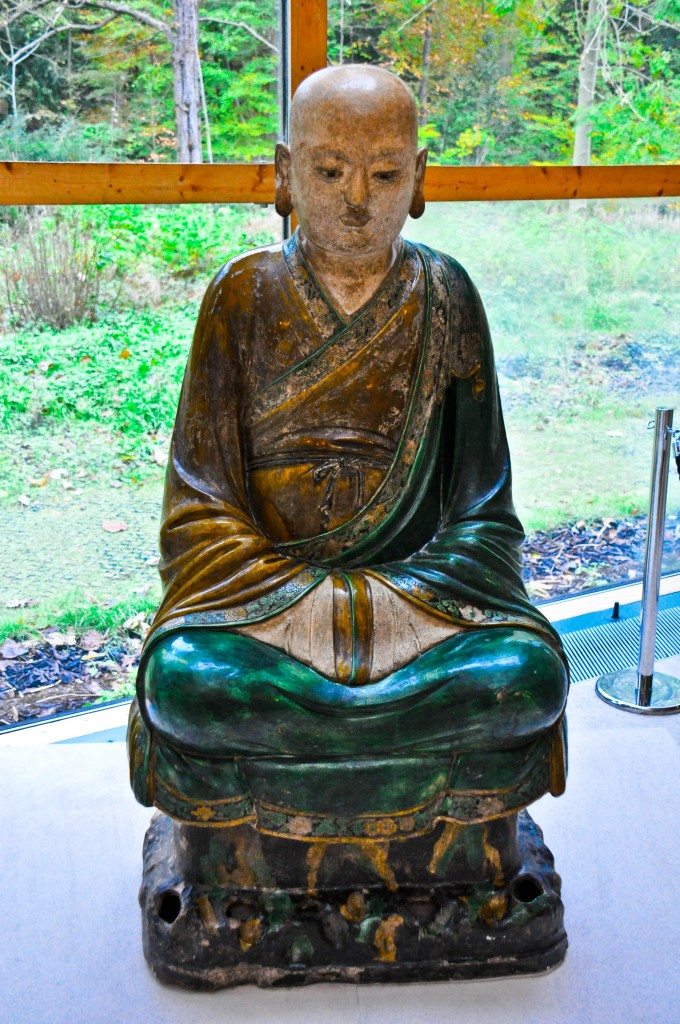
Statue of a Luohan. Stoneware decorated with enamels. Luohan are Buddhist disciples who have attained wisdom but who remain on earth to help people gain enlightenment. In China, there are 16 (or may be 18) Luohan represented in Buddhist temples. Ming dynasty, Chenghua period, 1465-1485 CE. Photo © Osama S. M. Amin.
Tomb of an Espes Knight
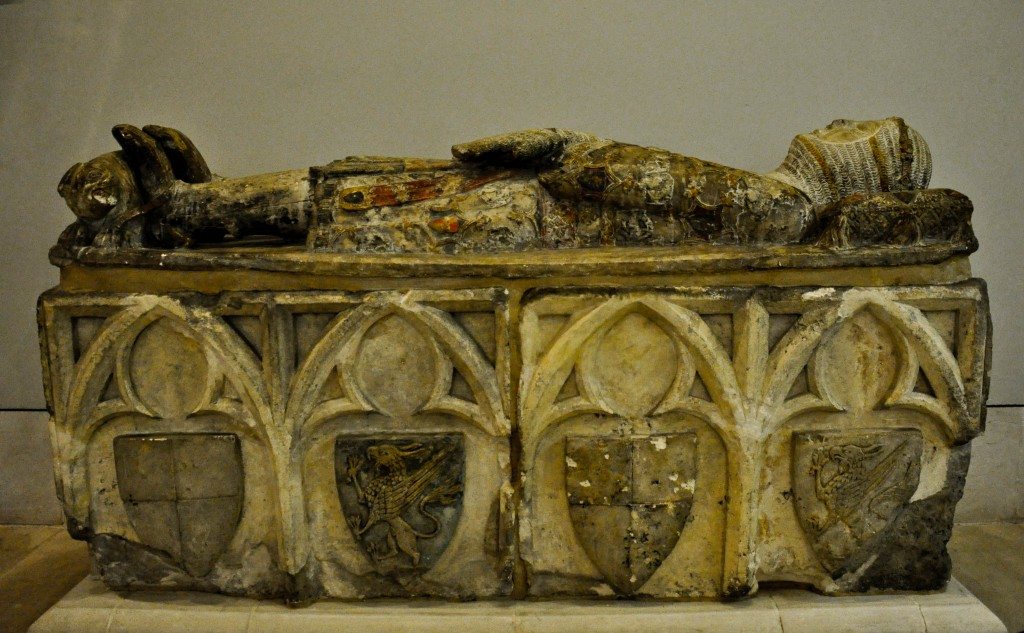
Tomb of a knight from the Espes family. The effigy is said to represent Don Ramon Perlata de Espes (died 1348 CE). He was captain general of the armies of Aragon and grand admiral of Aragon and Sicily. Formerly in the monarchy of Sta. Maria de Obarra at Calvera near Huesca, northen Spain. Painted limestone. Spanish, mid-14th century. Photo © Osama S. M. Amin.
Medieval Full-Plate Armour
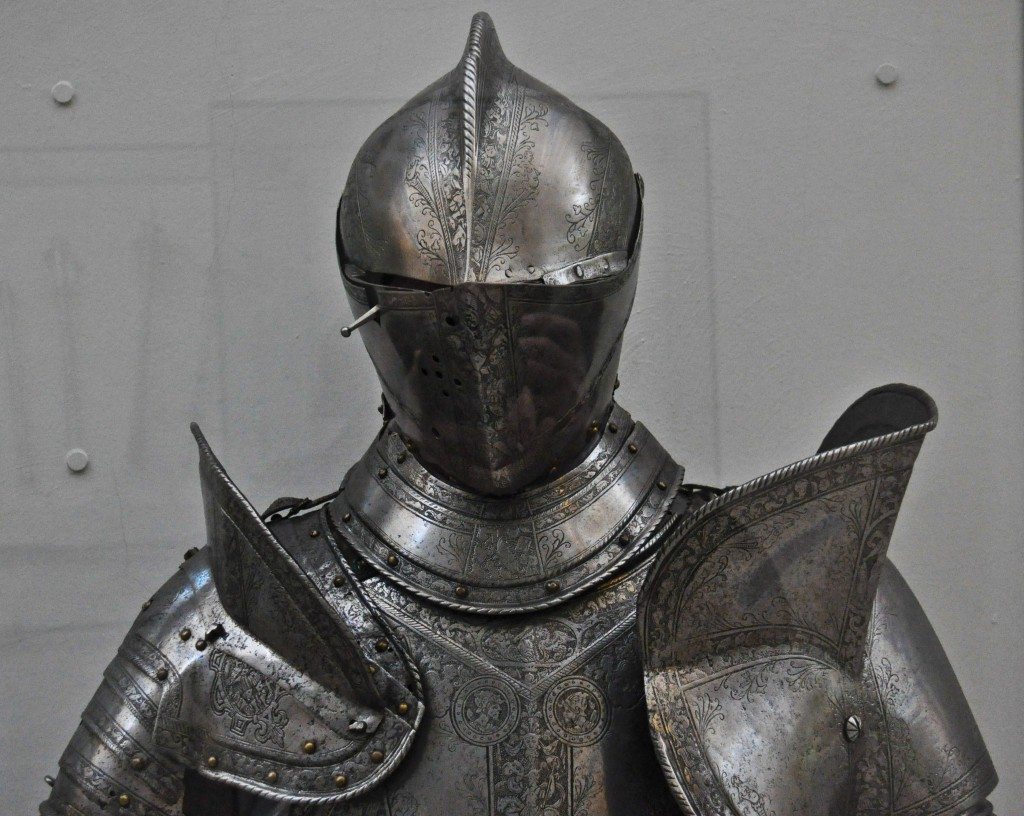
Body armor from Medieval Europe. Photo © Osama S. M. Amin.
The Holy Trinity
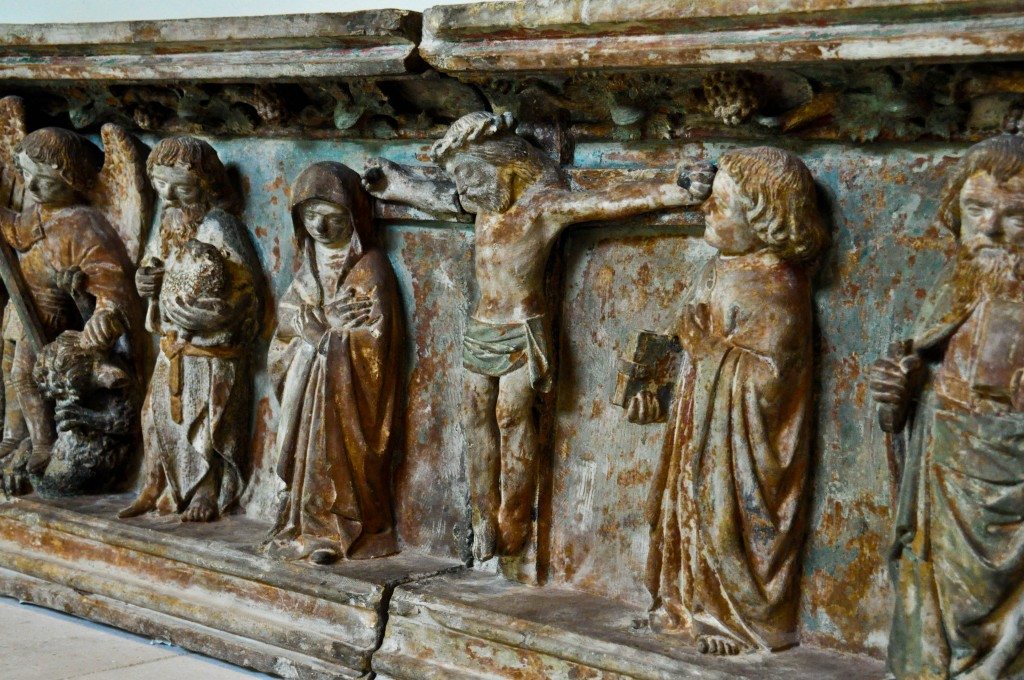
Retable (altarpiece), Christ on the cross flanked by the Virgin, St. John the Evangelist, and four other saints, painted limestone. French, Burgundy, c. 1450-1500 CE. Photo © Osama S. M. Amin.
Tang Dynasty Ram
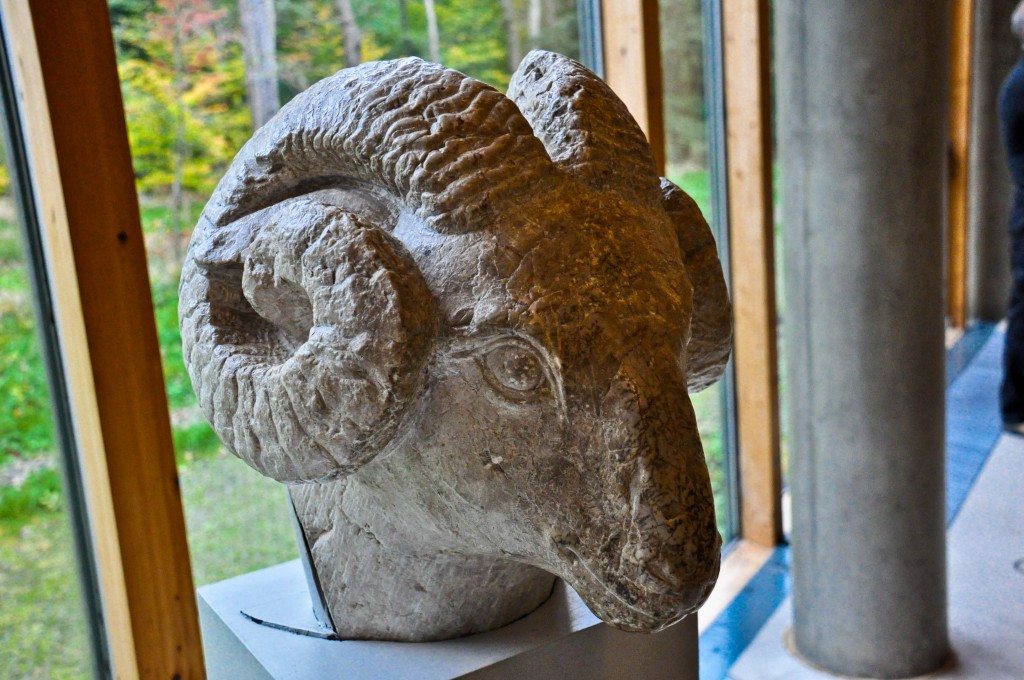
Limestone head of a ram. Chinese, Tang Dynasty, 618-907 CE. Photo © Osama S. M. Amin.
Scenes from the life of St. John
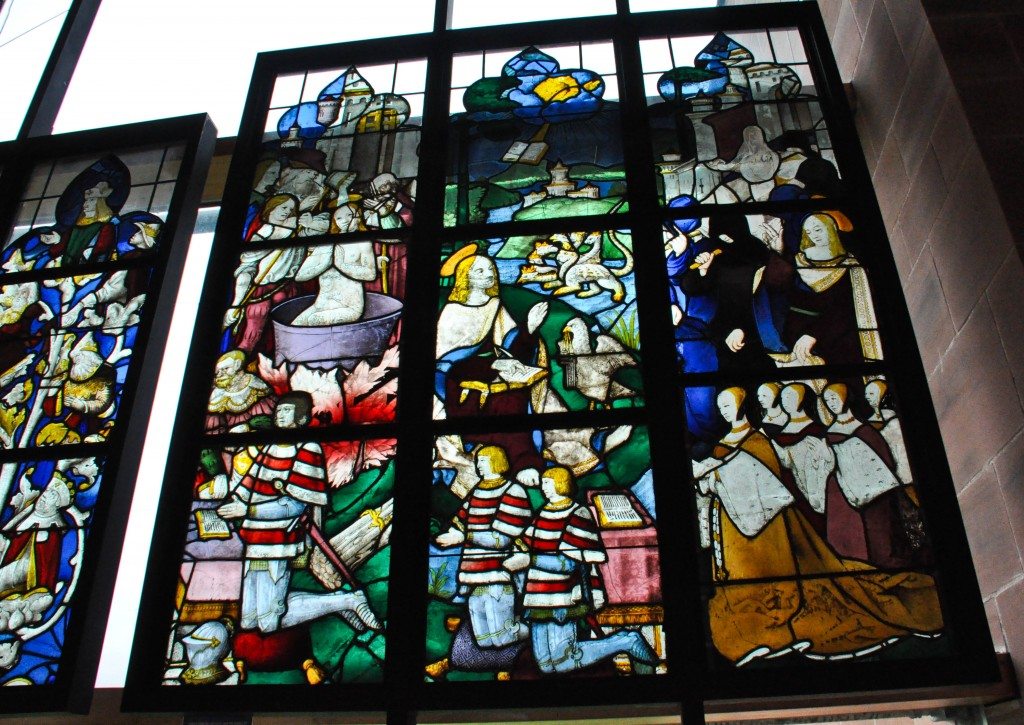
Scenes from the life of St. John, the Evangelist. The scenes represent St. John in a cauldron of boiling oil. St. John on Patmos, and his raising of Drusiana to life. At the base are the donors, the Rouen family of Bigars de la Londe. By a follower of the glass painter Arnoult de Nimegue, 1470-1540 CE, and from St John’s church, Rouen (France). Photo © Osama S. M. Amin.
Hutton Castel Drawing Room
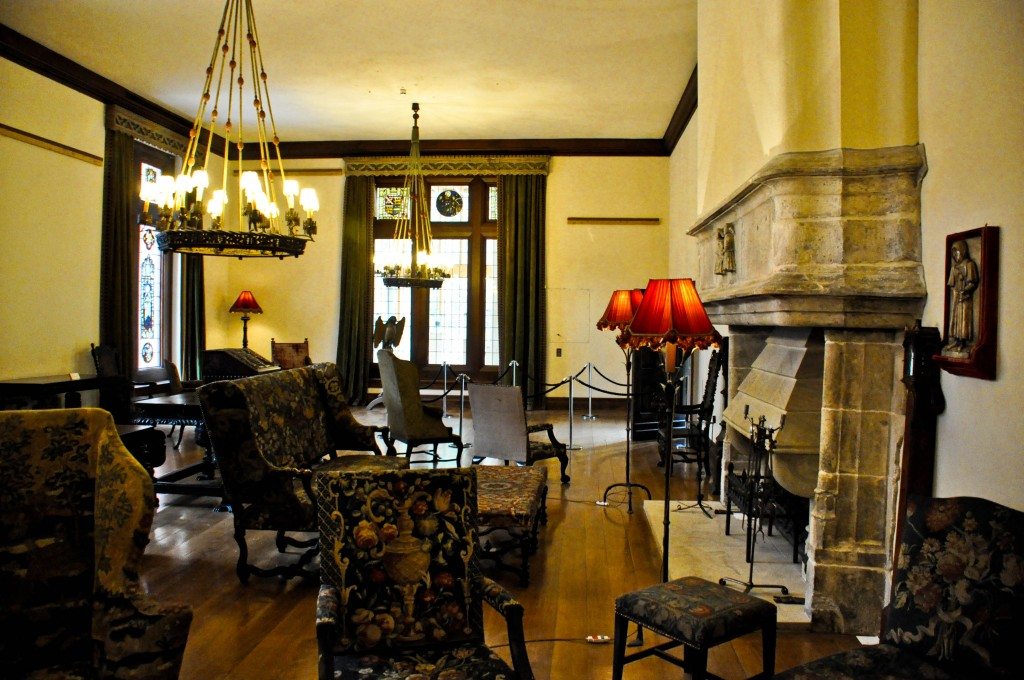
The Hutton Castel Drawing Room. Photo © Osama S. M. Amin.
Rodin’s Thinker
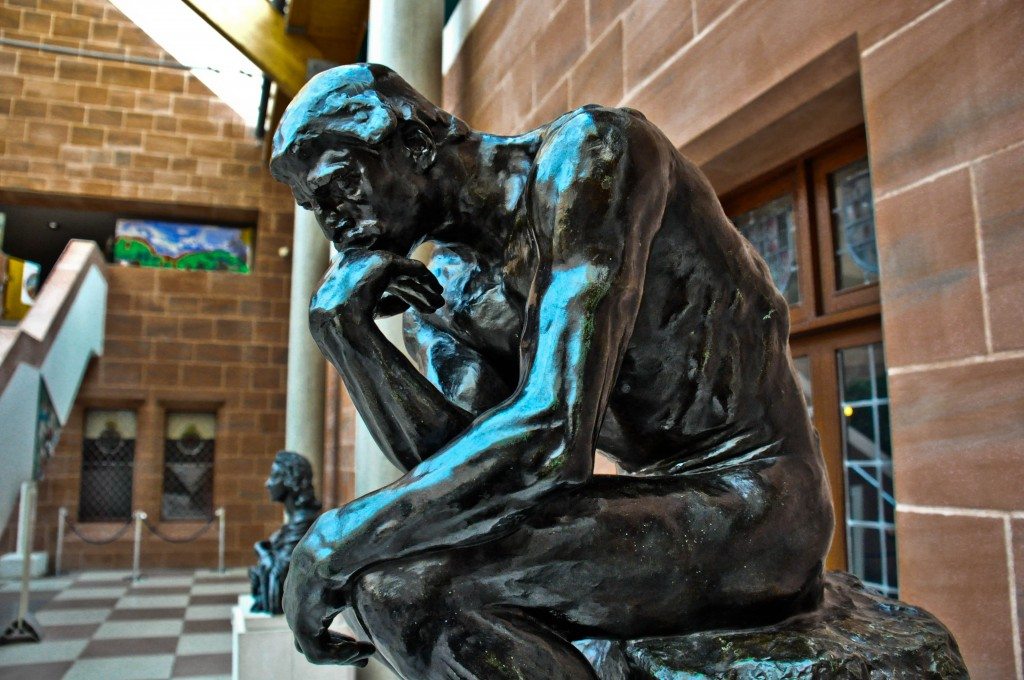
The Thinker Statue. This monumental bronze statue was made by Auguste Rodin (18040-1917 CE) in 1880 CE. This is one of 28 castings found world-wide. Photo © Osama S. M. Amin.
